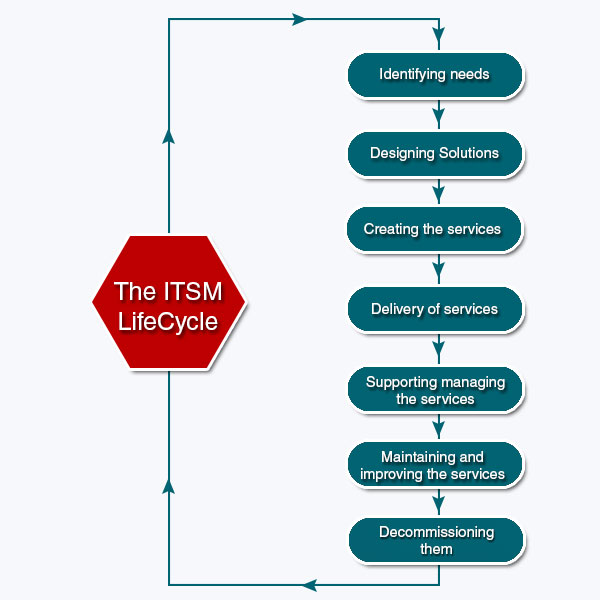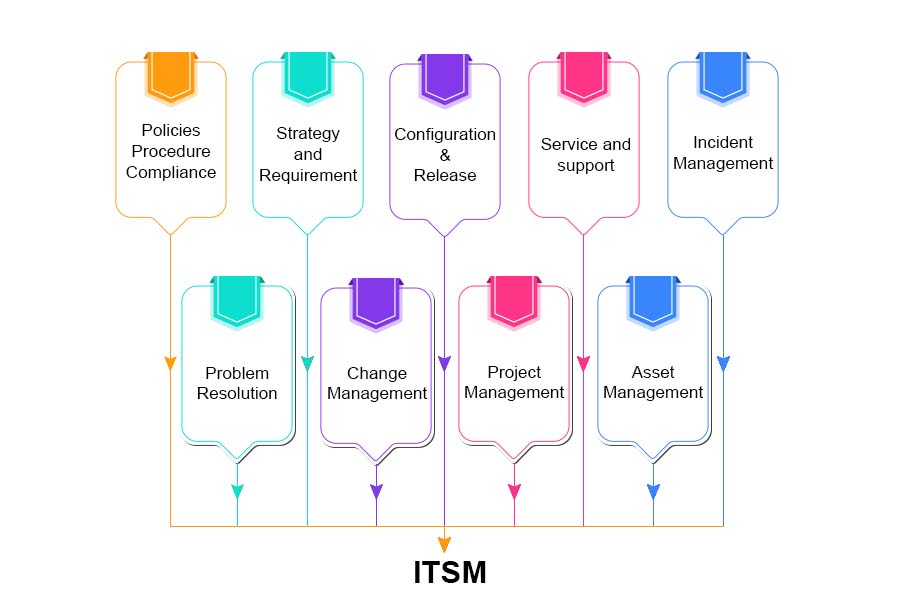ITSM- A Holistic Approach Towards Enterprise Transformation
Tech Insights | 27 July 2021 | Ratna Priya
Amidst technical innovations and digital acceleration of IT services and operations, IT Service Management is a process to ease the delivery of IT services to customers with end-to-end solutions.
In simple terms, we can understand that ITSM operates with a belief that IT should be delivered as a service that can involve activities to design, create, deliver and support IT services. All the requirements related to workplace technology, be it laptop, server, software applications or anything.
In simpler terms, if you require a new hardware or laptop, you need to submit your request through a portal by filing out a ticket eliminating a repeatable workflow by inserting all the relevant data and information.
Difference between ITIL, ITSM, and DevOps
ITIL is basically a framework of best practices and recommendations for managing an organization and individuals to deliver cost-effective IT Service Management. In simpler terms we can understand the ITIL is a view on how to do ITSM.
ITSM is the practical implementation of services in the best possible ways to the end-users. ITSM is a strategic approach of delivering IT services in best possible ways, with a primary focus on delivering value to customers. IT service management is performed by an appropriate mix of people, processes and information technology.
DevOps
It is an approach for quick development and deployment of applications which is a combination of software development and IT operations. This process is implemented by organizations more frequently nowadays due to its promised benefits of providing an ability to solve complex and critical issues quickly and easily. It is often seen that DevOps incorporate SRE (site reliability engineering) which further supports the goals by allowing engineers to automate operational tasks.
Framework of ITIL is described below:
Service strategy- It is a process where the full ITSM processes lifecycle is focussed on that includes designing, developing, implementing, and managing a complete portfolio of IT services. It also structures the cost and budget for these services and does forecasting of the demand of these services in the future.
Service design- It covers designing services and processes based on the requirement of business for availability, service, service level agreements with SLAs with users, and many more.
Service Transition- It involves processes and practices that do a shift to a new or changed service still with low or minimal impact on service quality and performance. It means the transition to a new service with no compromise on performance quality.
Service Operation- It involves the structure of everyday management of deployed services that includes executing service requests, responding to problems and incidents, and controlling access to services.
Benefits of ITSM
Some key benefits of IT Service Management include:
- Reduced operational cost for IT operations.
- Ability to establish well-defined, repeatable, and manageable IT processes.
- Improved efficiency of IT help desk teams
- Transparency of IT processes and services
- Reduced IT problems and improved response.
Let us highlight some of core benefits of IT Service Management for IT industries and its users:
- – Improved IT support and productivity
- – Enhanced user experience
- – Quick incident detection and response
- – Fair division of roles and responsibilities
- – Enriched business Classification
ITSM Processes
Information technology has remained an integral part for the development and growth of business and industries, but it is equally true that the modernized approach of management of IT services has left the conventional ways of IT way behind. And here comes ITSM in frame, an approach which is more encompassing and improves efficiencies across the board. Let’s cover some core practices which is often adopted by organizations:
Incident management:
Incident management is a process to restore normal service operation with minimal impact to users and business. It is followed as a process to be responsive to an incident raised thereby causing lowest impact to users to achieve the goal of restoring service. An incident can be reported via email, through service desk, self-service.
Problem management:
Problem management is a process of addressing to the root cause of the incident and determine the best possible ways to eliminate it.
Change management:
In IT, change is inevitable and continuous. Change management is the process of establishment of processes that does not cause service disruptions even when a change is done. It reduces compliance issues and several other critical issues that Is caused due to changes made to critical systems.
Asset and configuration management:
This is a process of monitoring and authorizing the configuration of software and hardware assets which is used to deliver services. Here comes a configuration management tool CMDB also called as configuration database management which acts as a central controller of entire IT assets and the relationships between them.
Service request management:
This is a process of handling and responding to the requests for new services from individual users or areas of the business. This request can be anything from employee request for a new laptop to partner request for portal access or an organization’s request for various seats on software as a service (SaaS) application.
Knowledge management:
This process includes basically sharing IT service-related knowledge within the organization or the extended enterprise.
Service level management:
It includes the process which is categorized based on the access level of the user, services and support are offered based on user groups and a defined service level agreement (SLA) is applicable for different groups.
IT service desk:
In ITSM, service desk offers one single point contact for resolving all the IT related issues with predefined criteria and SLAs for fielding and managing all incidents, problems and requests. Users can create incidents, service requests and problems tickets and track them till closure.




Advantages of deploying IT Service Management
- – Effective integration
- – Higher efficiency and productivity
- – Better visualization
- – Reduced costs
- – Increased ROI
- – Unified cloud access
- – Simplified data acquisition
- – Increased employee satisfaction




















